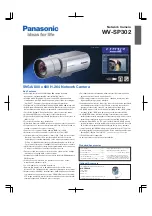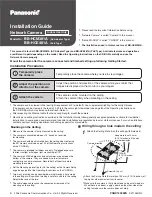
12-18
C
HAPTER
12: ATM, LAN E
MULATION
,
AND
V
IRTUAL
LAN
S
ability to define multiple emulated LANs permits the network manager to
create several bridged LAN domains within a single ATM network.
vLANs create secure workgroups, erect firewalls against broadcast storms
and allow networks to be reconfigured - all without changing cabling or
adding equipment. Network administrators can implement additions,
moves, and changes simply by redefining groups in the network
management system and remotely configuring parameters in the end
device or ATM switch.
In addition, vLANs can extend the life of routers in the network. Since
traffic is switched within the vLAN at full rate, routers need only deal with
the traffic between the vLANs, cutting down on the routed traffic load.
Since traffic is switched within vLANs at full rate regardless of protocol,
you can configure the LAN in a variety of ways without inhibiting
performance. This leaves your routers free to route traffic across the
virtual LAN boundaries and into the WAN.
Virtual LANs in the
7600 Card
A vLAN brings together logically related, but not necessarily physically
connected, Ethernet segments on the ATM network into a common
high-bandwidth broadcast domain. A vAN is defined simply as an
Emulated LAN together with all segments attached to it and the stations
connected to these segments. Multiple vLANs can operate independently
on a single ATM network; each vLAN corresponds to a distinct ELAN.
Connecting Local
Segments to a vLAN
A vLAN will usually contain some Ethernet segments physically connected
to the 7600 Card (
local
segments) as well as
remote
segments located in
different parts of the ATM network. Logically, the connection of the local
Ethernet segments into a vLAN proceeds in two steps: first, they are
formed into a local bridged-LAN environment by connecting them to a
local bridge (see “Bridged-LAN Environments in the 7600 Card” on page
11-11) and then the local bridged-LAN environment is connected to
remote bridged-LAN environments in the same vLAN by connecting the
bridge to the Emulated LAN.
The 7600 Card bridge setup handles both of these steps. Local Ethernet
segments are attached one-by-one to the appropriate bridge by simple
menu actions. Then an ATM connection is requested, causing the bridge
to be connected into an Emulated LAN. As a result, when the bridge
setup is completed, the local bridged-LAN environment is already part of
abtthgde.book Page 18 Tuesday, June 23, 1998 10:29 AM
















































